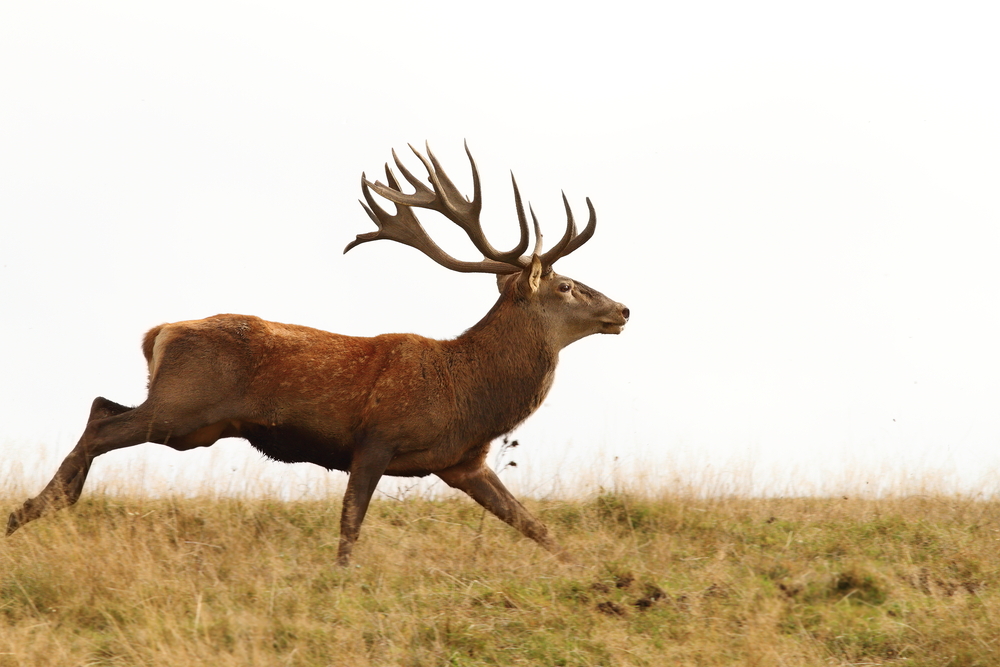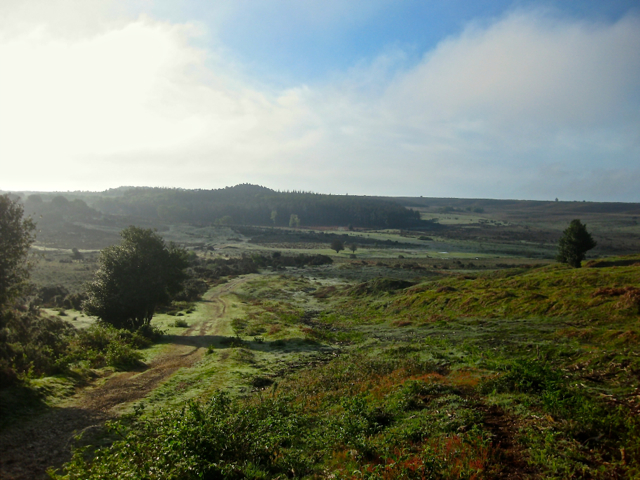
The red deer is Britain’s largest land mammal and a true native species. It is resident in certain parts of the New Forest.
In last week’s edition of the Forest Journal (05.02.15) was a front-page article about poaching that caught my eye. Poaching is defined as ‘the illegal practice of trespassing on another’s property to hunt or steal game without the landowner’s permission’. It has been considered a crime since antiquity, when the idea of ‘private property’ was first conceived. However, most people have a romantic view of the poacher as a solitary rural figure, perhaps with a dog, who goes into the countryside to catch game in order to feed his family. Such a notion would perhaps have been true during the medieval period and even up into the early 20th century, but not so now. Historically, the majority of people living in and around the New Forest lived off the land and had done so for generations. The fruits of the forest, hedgerow and heath would have been used to support meagre incomes. In 1079AD, when William I created the New Forest, the wild game (venison) and vegetation on which the game depended (vert), became his personal property and thus protected by Forest Law. Not only that but a whole tier of administration, officials and a court system were introduced to ensure that the venison and vert were maintained for royal hunting only.
Ancient Forest Law
Under the harsh Forest Law those found guilty of killing the King’s deer could be sentenced to death, even if it was to feed their hungry families. Firing at or disturbing deer could lead to mutilation by blinding or having a hand cut off. It was an offence to carry any weapons such as bows, which could be used for hunting, and dogs that were large enough to chase deer were required by law to be ‘expedited’, which meant that owners were required to amputate the pad and several toes of their dog’s feet. There is even an instrument known as Rufus Stirrup, hanging in the Verderer’s Court at Lyndhurst, which was traditionally used to measure dogs. Dogs that were too large to pass through, and hence considered a threat to the deer, were maimed in this way. Under the Forest Charter 1217AD this requirement was revised so that ‘the manner, moreover, of expediting by the assize shall generally be that three claws of the forefoot are to be cut off, but not the ball.’ Little wonder then that, under such oppression, small triumphs in securing illegal game to feed their families would have given poachers an idealised and legendary status.
Modern day poachers
But the poachers of today are a different proposition. Animal welfare agencies, wildlife organisations and the police are reporting more incidents in which criminal gangs using 4x4s, dogs, firearms, high-powered crossbows and catapults are targeting wild animals, including deer, hares and birds. These modern day poachers are not pursuing game in order to feed themselves or their families; they conduct their nefarious activities for financial gain or merely for fun. It has even been alleged that they are involved in other rural crimes, such as working dog and livestock theft and farmyard burglaries. What is certain though is that they have no regard for the environment they disturb, the wildlife they injure, the land they destroy or for the people who devote their lives to maintaining the countryside. The sickening loss last year of The Monarch, a 16-year old New Forest red deer stag, to a bungled poaching attempt by an inept hunter is not an isolated incident and surely demonstrates the utter selfishness of these criminals. In robbing the countryside of its wildlife poachers are not just stealing game, they are stealing the opportunity for people who value our rural landscape to experience its wild flora and fauna for generations to come.



You must be logged in to post a comment.